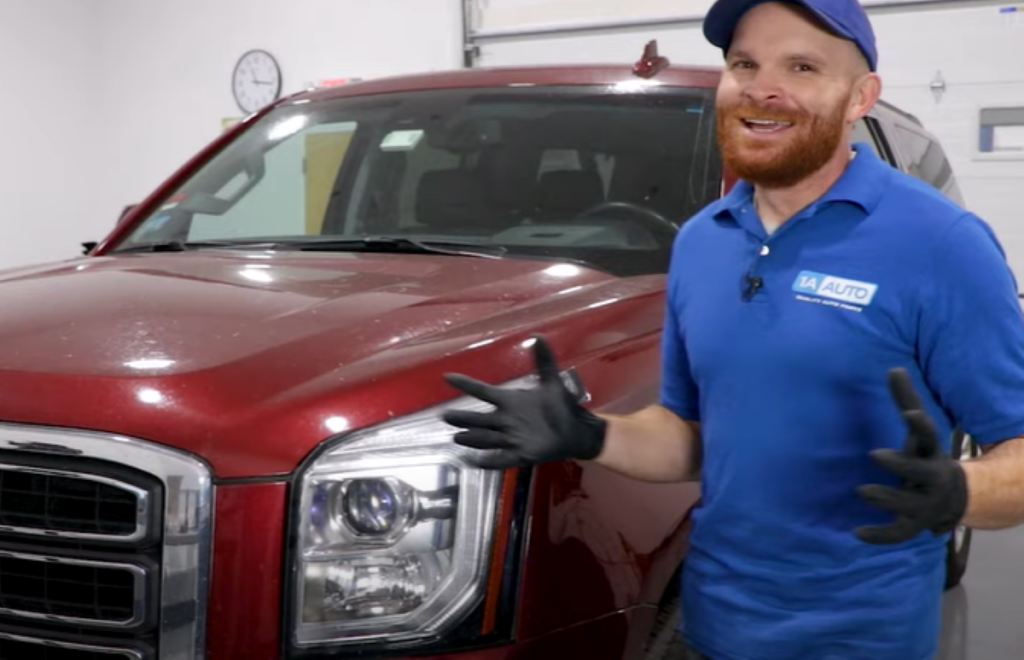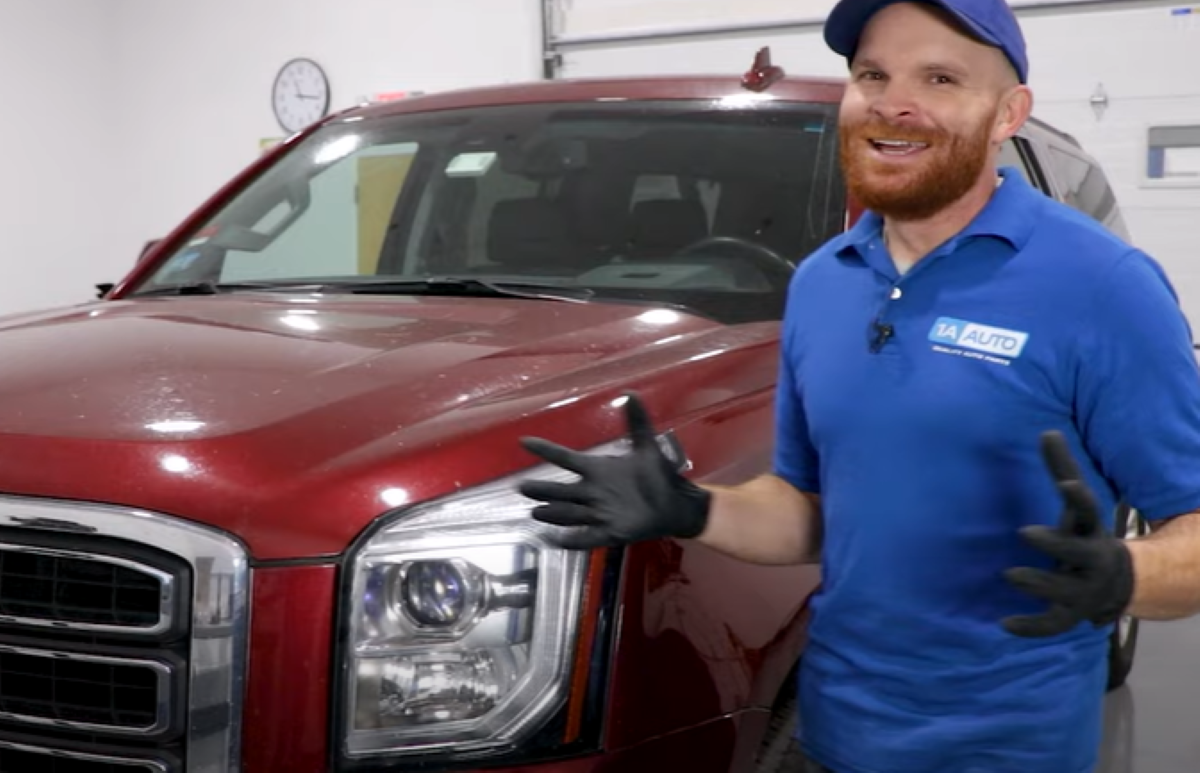A 2015 to 2020 GMC Yukon with problems braking or the tail lights fading are a couple of the top 5 problems with the 4th generation. While there is nothing particularly wrong with the Yukon, all models have their common issues, and here’s the ones with the 4th gen Yukon.
Common GMC Yukon Problems: 4th Generation (2015 to 2020)

1. Braking Problems
Symptoms of Braking Problems
- Brake pedal feels noticeably different when braking
- Have to press the brake pedal harder to stop the vehicle
Causes of Braking Problems on the 2015 to 2020 GMC Yukon
The common braking problems with the 2015 to 2020 GMC Yukon include stepping on the brake pedal with more pressure to stop the vehicle, and feeling a difference in how the brake pedal sinks when pressed. This is caused by an issue with the vacuum pressure that should be traveling to the brake booster, which is located on the firewall behind the brake master cylinder. It needs vacuum pressure so that you won’t have to use as much force with your foot to apply the brakes, but if there’s an internal problem like the a damaged pump in the booster or a leak from the o-ring on the brake line, you’ll find yourself pressing the brake pedal with more force than usual to stop the vehicle. A damaged pump in the brake booster is the most common cause for this problem.
How to Fix Braking Problems
Check the brake booster. Make sure the belt or pump isn’t damaged. Consider replacing the pump as that is a common cause of these issues on this vehicle. Check the brake lines and make sure they’re not loose, which is a sign there’s a problem with the o-ring seal.
See if there’s brake fluid running along the brake booster or paint flaking form it, which is a sign there’s a problem with a seal leaking on the backside of the brake master cylinder. If brake fluid is leaking into the brake booster, service it and replace the brake master cylinder at the same time. Then make sure you have the right amount of vacuum.
2. Tail Lights Failing
Symptoms of Common Problems with the Tail Lights
- One or two tail lights go out
Causes of Common Problems with the Tail Lights on the 15 to 20 GMC Yukon
With this common problem on the 4th gen GMC Yukon, when one or two tail lights goes out, all of the bulbs except the reverse lights go out. When you disconnect the wiring harness from the tail light bulbs, you might find that it’s melted with black areas or it has discoloration on the terminals. You’ll have to replace the wiring harness if this is the case. The wiring can also melt from overheating.
The circuit board in the tail light can get contaminated from moisture and build corrosion, or it can overheat and cause issues.
How to Fix the Tail Lights Failing

Check the tail light bulb wiring harness for black marks, melting, or discolored or corroded terminals, and replace the wiring harness if needed.
Peel back the wiring loom and check the wires inside for damage like melting. Check where the harness attaches to the tail light for discoloration or corrosion.
Remove the screws from the tail light to check the circuit board.
Consider replacing the tail light if you can’t fix or clean the circuit board, wiring, or wiring harness.
3. Fuel Injector O-Rings

Symptoms of Faulty Fuel Injector O-Rings
- Fuel smell from underneath the hood
- Engine vibrating from a misfire
- Check engine light for a misfire P0300 (random misfire) to P0301 and up (specific cylinder misfiring)
Causes of a Misfire and Fuel Smell
The fuel smell is a sign of problems with the fuel injectors. The misfire is a cause of not enough fuel mixing with the air to combust properly in the engine.
How to Fix a Misfire and Fuel Smell
If you notice a fuel smell from the engine area with the misfire, it’s likely from bad fuel injector o-rings.
If the spark plugs and ignition coils are in good condition and don’t seem like the cause of the misfire, there could be an issue with the fuel pressure. You can test the fuel pressure with a scanner that’s capable or with a fuel pressure gauge. This will let you know if you have enough pressure leading from the fuel pump.
If there’s a problem with the fuel injectors, you may not notice it until you inspect them or check for a smell of fuel. The fuel line enters at the driver rear side of the engine and underneath the intake. This is where you’ll find the fuel injectors. This means you’ll need to remove the upper part of the engine and the intake to look at the injectors. Check the condition of the o-rings and make sure they’re not damaged or torn. Kits are available with o-rings for all of the fuel injectors, which will allow you to replace them all at once.

4. Smoke from Tailpipe
Symptoms of Smoke from the Tailpipe
- Black smoke from the tailpipe
- Misfire symptoms like a rumbling engine
Causes of Black Smoke from the Tail Pipe on the 2015 to 2020 GMC Yukon
Black smoke from the tail pipe on the 2015 to 2020 GMC Yukon with a feeling of a misfire in the engine can seem like a worrisome problem, but it’s actually the vehicle trying to pump more fuel. With more fuel in the engine, it runs rich. As the engine runs rich, the catalytic convertor heats up faster to help with emissions and fuel economy in the long run.
How to Fix Black Smoke from the Trailpipe
The vehicle is meant to do this and it’s only likely to happen when the engine is at a very cold point, like on a cold winter day. It should last for only 60 seconds.
5. Seatbelts Not Retracting

Symptoms of Problems with the Seat Belt
- Slow or no seatbelt retention after removal
Causes of Seatbelt Problems
You might remove the seatbelt and notice it’s slow to retract or doesn’t retract back into the vehicle, leaving you with a saggy seatbelt. The metal d-ring can collect debris from common materials like make-up, sunscreen, or maybe grease if you work on your own car. This can slow the seatbelt down when it’s time to retract.
How to Fix the Seatbelt Not Retracting
Clean the d-ring with a paper towel or possibly velcro. Attach it to the backside of the seatbelt, apply pressure and remove build up from the d-ring. Don’t use a product like parts cleaner or something else with harsh chemicals, you could damage the metal or the seatbelt.
Don’t use sandpaper as that could scuff the metal, which could scuff and damage the seat belt over time.
Once clean, test how well the seatbelt works. If it doesn’t retract well, continue cleaning it.
Don’t leave the seatbelt not functioning properly. That can damage the internals where the tension should be and lead to more problems
4th Generation GMC Yukon Model Years
Watch More How-to Videos
Check out 1A Auto’s how-to video library and learn how to diagnose and fix more parts yourself.
Shop Parts & Tools
- Brakes & Wheel Bearing
- Steering & Suspension
- Headlights & Lighting
- Drivetrain
- Heating & Cooling
- Fuel & Emissions
- Tools & Accessories
- Engine & Engine Management
More Tips About Cars
- MAP vs. MAF vs. IAT Sensors
- Are Tail Lights and Brake Lights the Same Bulb?
- 4th Gen Camry Problems (1997 to 2001)
- 2000 to 2005 Buick LeSabre Problems

